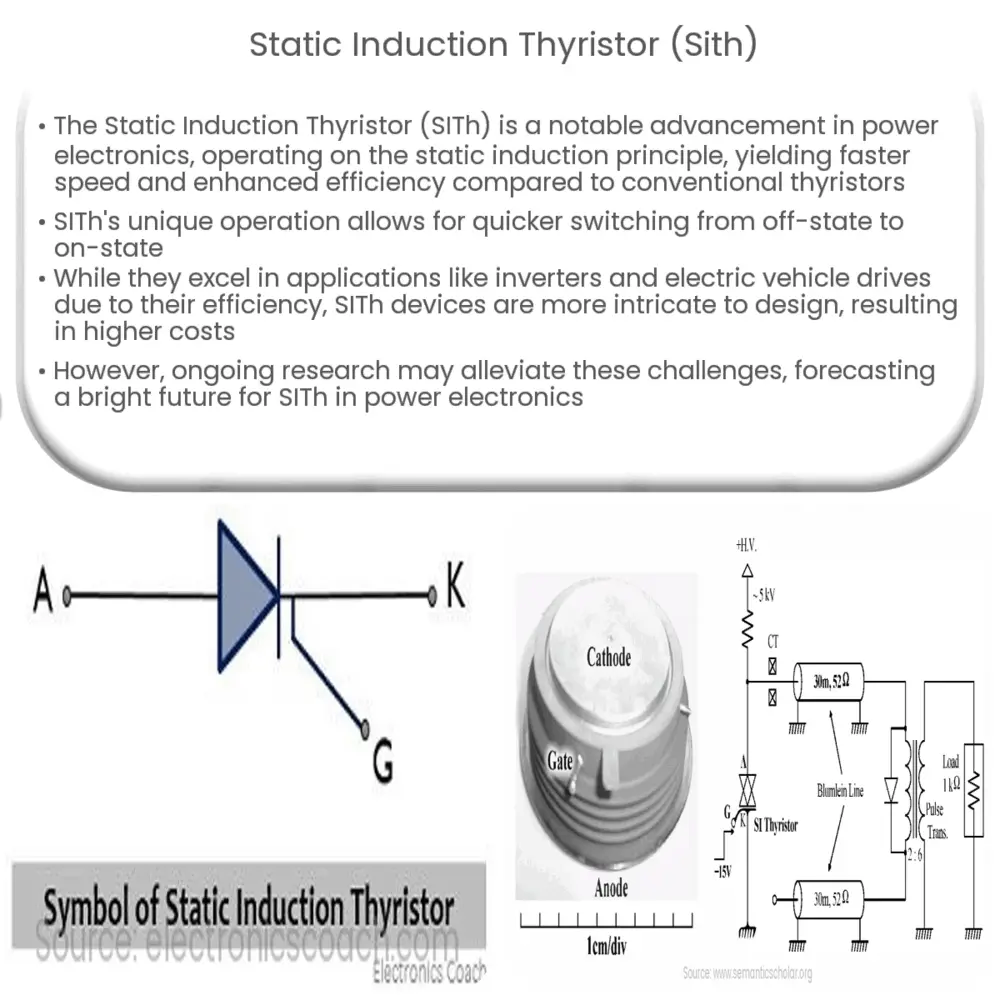Explore the world of power electronics with our comprehensive article on Static Induction Thyristors (SITh), their operation, advantages, and applications.

Introduction to Static Induction Thyristor (SITh)
The world of power electronics has witnessed numerous innovations over the years, and the Static Induction Thyristor (SITh) stands as a testament to this evolution. SITh is a type of thyristor that operates on the principle of static induction and offers a number of advantages over traditional thyristors in terms of speed and efficiency.
Principle of Operation
The Static Induction Thyristor (SITh) operates based on the static induction principle. This principle is similar to the mechanism found in Junction Field-Effect Transistors (JFETs) and Static Induction Transistors (SITs). However, the application of this principle in a thyristor configuration results in the unique characteristics of SITh.
- Off-state: When there is no gate signal, the device remains in an off-state. In this condition, a depletion layer exists throughout the device, preventing current flow.
- On-state: The application of a gate signal forces the device into the on-state. Here, the depletion layer retracts and allows for the flow of current.
This operation is unique to SITh and contrasts with the operation of conventional thyristors, which are based on p-n-p-n junctions and rely on avalanche multiplication for switching.
Advantages of SITh
- Switching Speed: One of the main advantages of SITh is its high switching speed. Due to the static induction principle, the device can switch from off-state to on-state and vice versa much faster than conventional thyristors.
- Efficiency: SITh devices also tend to have lower conduction and switching losses, which results in higher efficiency compared to conventional thyristors. This makes SITh particularly useful in high-frequency power electronic applications.
However, it’s important to mention that while SITh devices offer these advantages, they are more complex to design and manufacture. This complexity can lead to higher costs, making SITh a premium choice in power electronic applications.
Applications of SITh
SITh devices find applications in a wide range of power electronics systems due to their high switching speed and efficiency. They are particularly beneficial in high-frequency systems where switching losses can be substantial. Some of the key applications include:
- Inverters and converters
- Induction heating
- Electric vehicle motor drives
These applications exploit the unique characteristics of SITh to achieve superior performance and efficiency.
Challenges and Future Prospects
Despite the numerous advantages offered by SITh, it is not without its challenges. The complex design and manufacturing process of SITh devices lead to high costs, which can limit its application in certain scenarios. Furthermore, the need for specialized drive circuits and thermal management solutions add to the overall system complexity and cost.
However, ongoing research and technological advancements are making strides to mitigate these challenges. Recent developments in semiconductor fabrication technologies are likely to reduce the manufacturing complexity and cost of SITh devices in the future. In addition, innovations in thermal management and drive circuit design can potentially expand the applications of SITh in power electronics.
Conclusion
In conclusion, the Static Induction Thyristor (SITh) is a remarkable innovation in the field of power electronics. Leveraging the static induction principle, SITh offers superior switching speed and efficiency compared to conventional thyristors. This makes them an attractive choice for high-frequency power electronic applications, such as inverters, converters, induction heating, and electric vehicle motor drives.
Despite the challenges associated with their design, manufacturing, and integration, the future for SITh devices looks promising. With ongoing technological advancements and research, we can expect these devices to become more accessible and prevalent in the power electronics landscape. As we move towards a future dominated by renewable energy and electric vehicles, the role of efficient and fast power electronic devices like SITh will become increasingly critical.
Understanding and appreciating the nuances of SITh devices is crucial for engineers, researchers, and enthusiasts in the field of power electronics. It not only provides insights into the state-of-the-art technology but also offers a glimpse into the future of power electronic systems.

